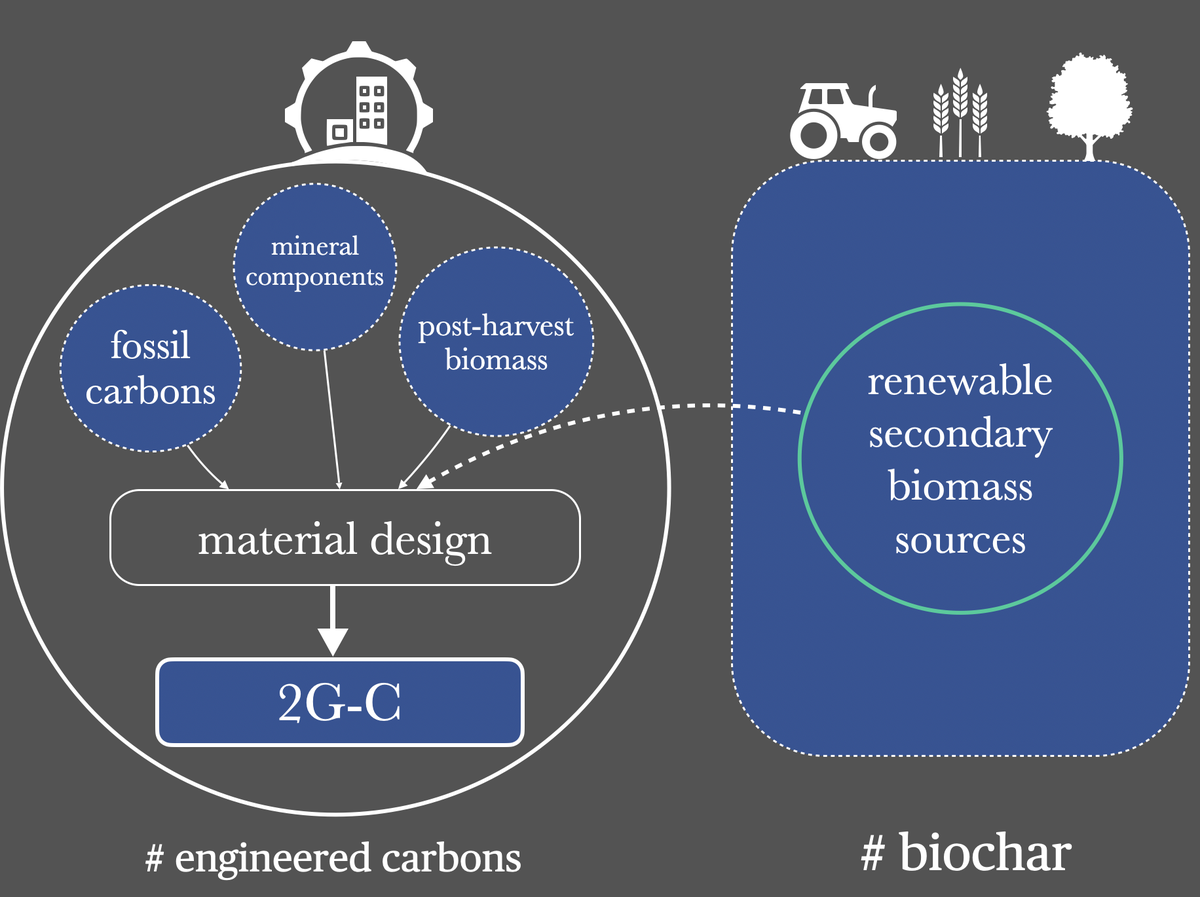Second Generation Carbons: what are they?

By second-generation carbons (2G-C), is intended a wide range of carbon-based substances, different in composition, structure, properties, use, having in common the technological manufacturing process: they are obtained through the carbonisation of carbonaceous substances and possible mineral components (metals, alkalis and other inorganic components) whose composition and preparation is designed in terms of chemical, physical and microbiological action for uses such as agriculture, the treatment of industrial/liquid and gaseous effluents as a replacement for activated carbons, the removal of contaminants with recovery of nutrients (P and N) and chemical elements (e.g. B, Mg, Mn), use in catalysis and improvement of industrial processes, electrochemistry and building materials. In this category, the best known product is biochar, i.e. charcoal produced specifically for agronomic and environmental use through soil application. Both the carbonaceous substances and the mineral component of 2G-C can be obtained from production waste (by-products or waste) of renewable biological origin (sustainable sources of waste biomass) as well as from production waste materials and carbonaceous substances of fossil origin. The term ‘charcoal’ refers to the carbonaceous component of 2-GC, while the term ‘second-generation’ indicates both the production of charcoal from waste, with a view to material circularity, and the technological advancement related to the design and engineering of the substances and materials obtained. This group of products expresses new properties, the most important of which is that of carbon storage, which varies depending on the destination from a few years to hundreds of years.
Second generation carbons derive from production by-products or waste, containing carbon of biological origin, fossil + mineral components (metals, alkalis and other inorganic components) for the preparation of replacement materials for activated carbon, materials used in filtration processes and materials for the capture of CO2.
This definition includes:
- biochar (carbonaceous material that derives from agricultural by-products and waste, not waste)
- composite materials with carbonaceous components and mineral components
- .......
Solutions
- replacement of activated carbon to filter pollutants in liquid and gaseous flows
- nutrient and phosphorus recovery
- applications in agriculture as a soil improver (CMC 14 Reg 2019/1009, Italian Legislative Decree 75/2010)
Applications realised and in progress
- Removal of phosphorus (P) and ammonium ion (NH4 +) from purification of water of industrial origin (e.g. distilleries, oil mills and other agri-food companies) to improve the quality of the outgoing water flux and reduce purification costs
- Long-term experiments of biochar application in soil (Enochar)
- Co-composting of biochar and organic residues (BTF)
Tool, Techniques, Skills and Collaborations
We use a series of analytical instruments to check the quality and properties of materials and solutions
We use innovative equipment for the production of 2GC: among these the thermo-catalytic reforming (TCR) process and equipment for controlled carbonization
We collaborate with other University Labs (e.g. Inorganic Chemistry, Prof. G. Falini) for access to instruments such as XRD, SEM, FTIR, etc.
We perform sustainability assessment and life cycle assessment with the GABI® software
We assess the regulatory compliance of the produced 2GC. The group has experience and knowledge on the requirements for waste transformation, for waste end-of-life qualification and specific knowledge on biochar regulations, to help companies in the conformity assessment phase with respect to possible industrial applications.